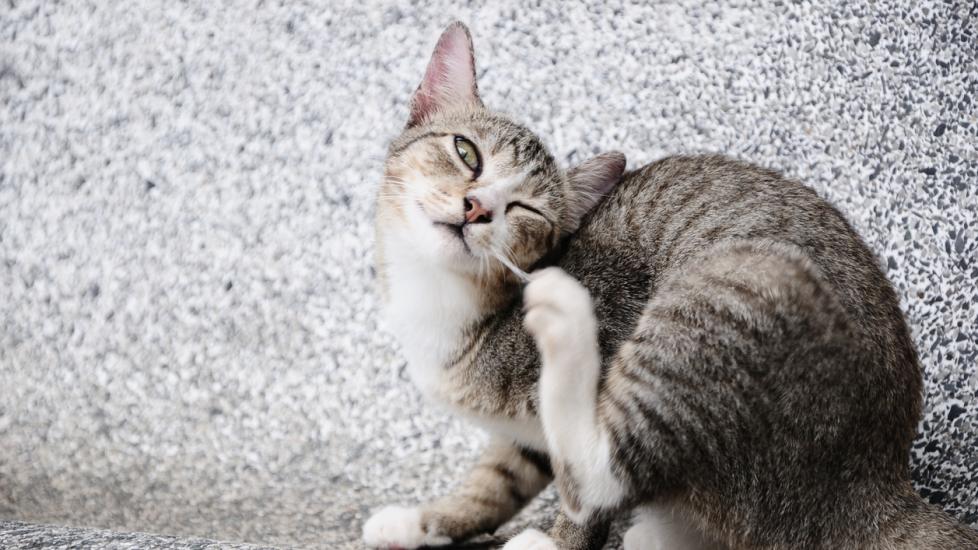Scabies in Cats
Scabies in Cats
Scabies is not common in cats and usually caused by a regional outbreak. The first symptoms you may notice will be itchy ears that may be crusted on the edges.
Cats can be affected by two types of scabies mites:
-
Notoedres cati (feline scabies)
-
Sarcoptes scabiei (canine scabies)
Causes of Scabies in Cats
Cats get scabies through contact with an animal that has scabies. For feline scabies, this contact is usually with an affected cat. For canine scabies, the contact is usually with an affected dog. These mites are highly contagious between animals.
Symptoms of Scabies in Cats
Symptoms usually begin with crusty and itchy ear edges.
Other symptoms include:
-
Intense itching
-
Skin flaking
-
Hair loss
-
Inflammation
Feline scabies will generally spread to your cat’s face, and if not treated, their entire body.
Diagnosing Scabies in Cats
Scabies are typically diagnosed through skin scrapings that are examined under a microscope. If scabies mites are present, they are easy to see under magnification. However, the absence of mites/eggs on a skin scraping does not rule out an infestation. Diagnosis is sometimes made by response to treatment.
Treatment of Feline Scabies
Treatment options for feline scabies include:
-
Although isoxazoline flea control products such as Bravecto® and Revolution Plus® are not approved to treat scabies in cats because the condition is so rare, a single dose is effective.
-
Selamectin (Revolution®) is approved for use in dogs for sarcoptic mange, but it is not approved for feline use because scabies are so rare in cats. However, it is an effective treatment for cat scabies.
-
Moxidectin (Advantage Multi®) is effective but also not approved.
-
Ivermectin is one of the first treatments used for feline scabies and is still used today. It is usually given by injection every 1-2 weeks for a month.
-
Older treatments such as lime sulfur or amitraz (Mitaban®) dips are effective but have fallen out of favor because easier treatment options are now available.
Recovery and Management of Feline Scabies
Response to scabies treatment generally takes a few weeks, depending on the medication your vet recommends and the number of animals affected.
Routine use of Bravecto®, Revolution Plus®, Revolution®, or Advantage Multi® should stop your cat from becoming infested after treatment.
If your cat has a Notoedres or Sarcoptes scabies infestation, all cats and dogs in contact with your pet should be treated. Humans may also be affected by scabies, but since they are not a primary host, the problem is usually mild.
Featured Image: iStock.com/primeimages
